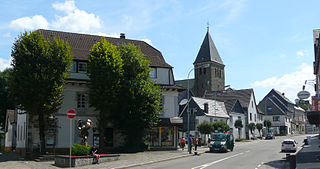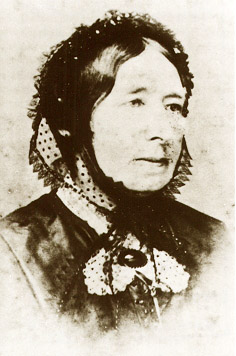
The Ruhr is a river in western Germany, a right tributary (east-side) of the Rhine.

Dortmund is the third-largest city in North Rhine-Westphalia, after Cologne and Düsseldorf, and the ninth-largest city in Germany. With a population of 612,065 inhabitants, it is the largest city of the Ruhr as well as the largest city of Westphalia. It lies on the Emscher and Ruhr rivers in the Rhine-Ruhr Metropolitan Region, the second biggest metropolitan region by GDP in the European Union, and is considered the administrative, commercial, and cultural centre of the eastern Ruhr. Dortmund is the second-largest city in the Low German dialect area, after Hamburg.

Gelsenkirchen is the 25th-most populous city of Germany and the 11th-most populous in the state of North Rhine-Westphalia with 262,528 (2016) inhabitants. On the Emscher River, it lies at the centre of the Ruhr area, the largest urban area of Germany, of which it is the fifth-largest city after Dortmund, Essen, Duisburg and Bochum. The Ruhr is located in the Rhine-Ruhr metropolitan region, the second-biggest metropolitan region by GDP in the European Union. Gelsenkirchen is the fifth-largest city of Westphalia after Dortmund, Bochum, Bielefeld and Münster, and it is one of the southernmost cities in the Low German dialect area. The city is home to the football club Schalke 04, which is named after Gelsenkirchen-Schalke. The club's current stadium Veltins-Arena, however, is located in Gelsenkirchen-Erle.

Hagen is a city in the state of North Rhine-Westphalia, Germany, on the southeastern edge of the Ruhr area, 15 km south of Dortmund, where the rivers Lenne and Volme meet the Ruhr. In 2010, the population was 188,529.

Herne is a city in North Rhine-Westphalia, Germany. It is located in the Ruhr area directly between the cities of Bochum, and Gelsenkirchen.
The Ennepe-Ruhr-Kreis is a district in the center of North Rhine-Westphalia, Germany. It is part of the southern Ruhr urban area and has ca. 324,000 inhabitants (2012). The district's seat is Schwelm; the largest of its nine towns is Witten.

Dinslaken is a town in the district of Wesel, in North Rhine-Westphalia, Germany. It is known for its harness racing track, its now closed coal mine in Lohberg and its wealthy neighborhoods Hiesfeld and Eppinghoven.

Witten is a city with almost 100,000 inhabitants in the Ennepe-Ruhr-Kreis (district) in North Rhine-Westphalia, Germany.

The Rhine-Ruhr metropolitan region is the largest metropolitan region in Germany, with over ten million inhabitants. A polycentric conurbation with several major urban concentrations, the region covers an area of 7,110 square kilometres (2,750 sq mi), entirely within the federal state of North Rhine-Westphalia. The Rhine-Ruhr metropolitan region spreads from the Ruhr area (Dortmund-Bochum-Essen-Duisburg) in the north to the urban areas of the cities of Mönchengladbach, Düsseldorf, Wuppertal, Leverkusen, Cologne, and Bonn in the south. The location of the Rhine-Ruhr at the heart of the European Blue Banana makes it well connected to other major European cities and metropolitan areas such as the Randstad, the Flemish Diamond and the Frankfurt Rhine Main Region.

Ennepetal is a town in the district of Ennepe-Ruhr-Kreis, in North Rhine-Westphalia, Germany. It was created in 1949 out of the former municipalities Milspe and Voerde. It was named after the river Ennepe, which flows through the municipality.

Breckerfeld is a town in the district of Ennepe-Ruhr-Kreis, in North Rhine-Westphalia, (Germany). It is located in the southeasternmost part of the Ruhr area in northern Sauerland. The town is a member of Regionalverband Ruhr (association).

Hattingen is a town in the northern part of the Ennepe-Ruhr-Kreis district, in North Rhine-Westphalia, Germany.

Herdecke is a town in the district of Ennepe-Ruhr-Kreis, North Rhine-Westphalia in Germany. It is located south of Dortmund in the Ruhr Area. Its location between the two Ruhr reservoirs Hengsteysee and Harkortsee has earned it the nickname Die Stadt zwischen den Ruhrseen.

Schwelm is a town in the district of Ennepe-Ruhr-Kreis in the administrative region of Arnsberg within the state of North Rhine-Westphalia.

Sprockhövel is a town in the district of Ennepe-Ruhr-Kreis, North Rhine-Westphalia, Germany.

Johanna Friederika Henriette Katharina Davidis was a German cookbook writer. Although many similar cookbooks had been published by then, amongst others Sophie Wilhelmine Scheibler's Allgemeines deutsches Kochbuch für bürgerliche Haushaltungen in several editions, Davidis' Praktisches Kochbuch became the reference cookbook of the late 19th and early 20th century, a standard in German households. The large number of second-hand copies still available, frequently heavily annotated, are proof that the books were in much use. In many families Praktisches Kochbuch was handed down through the generations.

Kaarst is a town in Germany. It lies in the district of Rhein-Kreis Neuss in North Rhine-Westphalia. It is 5 km west of Neuss and 12 km east of Mönchengladbach.

Castrop-Rauxel, often simply referred to as Castrop by locals, is a former coal mining city in the eastern part of the Ruhr Area within the state of North Rhine-Westphalia in Germany.

Lünen is a town with around 86,000 inhabitants in North Rhine-Westphalia, Germany. It is located north of Dortmund, on both banks of the River Lippe. It is the largest town of the Unna district and part of the Ruhr Area.

Senden is a municipality in the district of Coesfeld, in North Rhine-Westphalia, Germany.



























